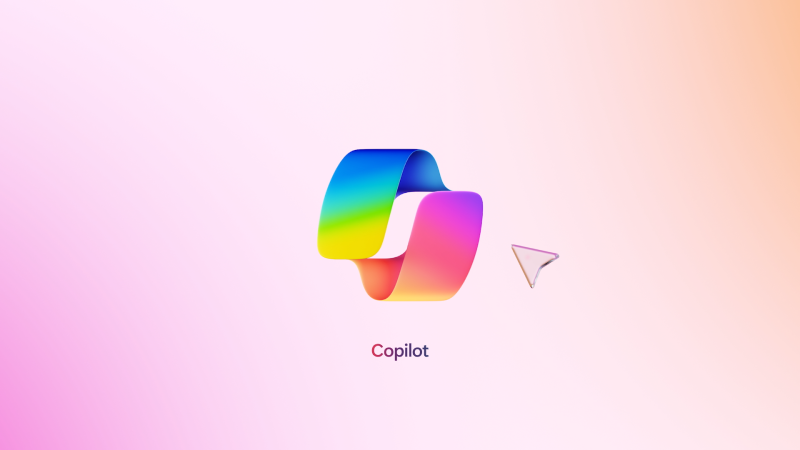Microsoft is making significant strides in its artificial intelligence capabilities with a comprehensive overhaul of its AI assistant, Copilot. This update not only introduces a more human-like voice but also enhances Copilot’s functionality with real-time web page analysis. These changes reflect Microsoft’s commitment to creating a more engaging and intuitive user experience.
A More Human Voice
One of the standout features of the revamped Copilot is its upgraded voice. Microsoft has collaborated with a diverse team of creative professionals—including psychologists, novelists, and comedians—to refine Copilot’s tone and style. The goal is to create a voice that feels friendly and relatable, making interactions with the AI more engaging. For instance, during a demonstration, Copilot provided personalized gift suggestions with a casual and conversational tone, saying, “Italian (olive) oils are the hot stuff right now. Tuscan’s my go-to. Super peppery.” This shift in delivery style aims to make users feel more connected to the AI.
The human-like voice capabilities also include verbal cues that suggest active listening, such as “cool” or “huh.” These enhancements are designed to create a more interactive experience, making users feel heard and understood. This focus on natural communication can set Copilot apart from other AI assistants and chatbots on the market.
Real-Time Web Page Analysis
Another exciting addition to Copilot is its ability to analyze web pages in real-time. This feature allows users to browse the internet while receiving contextual information and insights from Copilot. For instance, as users navigate various sites, Copilot can offer explanations, summarize content, or answer questions about what they’re viewing. This capability transforms the way users interact with information online, making the browsing experience more informative and efficient.
Copilot’s Position in the AI Landscape
Launched in a competitive market that includes established players like OpenAI’s ChatGPT and Google’s Gemini, Copilot aims to carve out its niche. Mustafa Suleyman, chief executive of Microsoft AI, expressed optimism about Copilot’s potential, emphasizing the importance of creating a distinctive product. While Microsoft has historically focused on business software, Suleyman’s leadership marks a shift towards more consumer-centric technology, highlighting the need for innovation in this area.
Despite its challenges in the consumer market—such as the ongoing dominance of Google’s search engine—Microsoft is poised to make a bigger impact with Copilot. The updates to Copilot represent a strategic move to enhance its usability and appeal among everyday users.
Features for Subscribers
For consumers willing to invest in the Pro version of Copilot, priced at $20 per month, Microsoft is rolling out a feature called “Think Deeper.” This function helps users weigh various options, making it easier to make decisions, whether they’re considering a move to a new city or contemplating a major purchase. This kind of reasoning capability positions Copilot as more than just a chatbot; it becomes a tool for active decision-making and planning.
Another intriguing feature for Pro subscribers is called Copilot Vision, which allows users to interact with the AI based on visual content seen in the Microsoft Edge browser. This feature enables users to “talk” to Copilot about what they see, enhancing the interactivity and contextual understanding of the AI. Microsoft assures users that their browsing content won’t be saved or used to train the AI, addressing potential privacy concerns.
The Vision for Copilot
Suleyman’s vision for Copilot extends beyond its current capabilities. He has expressed aspirations for the AI to become an “ever-present confidant,” capable of learning context from users’ documents, desktop activities, and even their gaming consoles, should users grant permission. This kind of deep integration into a user’s digital life could significantly enhance the AI’s utility and personalization.
As technology continues to evolve, the potential for AI assistants like Copilot to become more integral to daily life is immense. The ability to integrate seamlessly with various platforms and services could lead to a more cohesive and productive experience for users.
Community Response and Future Implications
The response to these updates has been generally positive, with users expressing excitement about the improved voice and the potential for real-time interaction. As AI technology becomes increasingly sophisticated, the expectations for these tools will continue to grow. Microsoft’s commitment to innovation and responsiveness to user feedback will be crucial in maintaining a competitive edge in this rapidly changing landscape.
Looking ahead, the enhancements to Copilot may inspire other tech companies to elevate their AI offerings. The push for more human-like interactions, contextual understanding, and real-time capabilities is likely to become a standard expectation across various platforms. As consumers demand more intuitive and personalized experiences, the industry will need to adapt accordingly.
Conclusion: A Step Forward for AI Assistants
Microsoft’s major upgrade to Copilot marks a significant advancement in the realm of AI assistants. With a more relatable voice and the ability to analyze web content, Copilot is positioning itself as a versatile tool for both productivity and engagement. As Microsoft continues to innovate and refine its AI offerings, the potential for Copilot to serve as an invaluable resource for consumers is immense.
By focusing on user experience, contextual understanding, and seamless integration with other digital tools, Microsoft is not only enhancing Copilot’s functionality but also paving the way for the future of AI in everyday life. As these technologies develop, they will play an increasingly crucial role in how individuals interact with information, make decisions, and navigate their digital environments. Microsoft’s commitment to pushing the boundaries of what AI can do will be a key driver in shaping the future of technology and consumer experiences.
